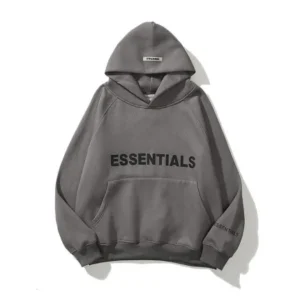
Outdoor furniture can transform your patio, garden, or balcony into a relaxing extension of your home. It offers the perfect space to unwind, entertain, and enjoy nature. However, many people are often surprised by how expensive outdoor furniture can be. While the price tag may seem steep, several reasons contribute to the high cost of outdoor furniture. From the quality of materials to design, manufacturing processes, and long-term durability, this article will explore why outdoor furniture is priced the way it is, and how it ultimately becomes a worthwhile investment.
1. Durability and Weather Resistance
One of the primary reasons why outdoor furniture tends to be expensive is the requirement for high durability. Unlike indoor furniture, outdoor pieces are exposed to harsh weather conditions year-round. Whether it’s intense sunlight, rain, wind, or even snow, outdoor furniture needs to withstand the elements without deteriorating quickly.
This requires manufacturers to use specialized, weather-resistant materials like aluminum, stainless steel, teak, or resin wicker. These materials are engineered to resist rust, corrosion, and warping, which ensures that the furniture remains functional and attractive for years. Teak, for instance, is naturally resistant to moisture, insects, and mold, which makes it a top choice for high-end outdoor furniture. However, its slow growth and scarcity contribute to its high price. The use of such durable materials significantly increases the cost of outdoor furniture, but they ensure that the products last longer and require less maintenance.
2. Quality of Materials
The type and quality of materials used in outdoor furniture are major factors that influence its cost. High-end outdoor furniture typically uses premium-grade materials that are more expensive to source and produce. For example, teak wood, known for its durability and weather resistance, can cost substantially more than other types of wood due to its slow growth and limited availability.
Aluminum is another popular choice for outdoor furniture frames because it is lightweight, resistant to rust, and easy to move around. However, high-quality aluminum furniture often undergoes powder coating or anodization to enhance its longevity and aesthetic appeal. These extra processes can drive up production costs, making the final product more expensive.
Synthetic materials like all-weather wicker or high-density polyethylene (HDPE) are also commonly used for outdoor furniture. While these materials offer a combination of durability and style, their manufacturing process involves advanced technologies that add to the cost. HDPE, for example, is UV-resistant and does not crack or fade, making it a long-lasting option for outdoor furniture. The investment in such high-quality materials ensures that outdoor furniture can withstand years of outdoor use without compromising on appearance or comfort.
3. Design and Craftsmanship
Outdoor furniture is not just about functionality; it is also about aesthetics and comfort. The craftsmanship that goes into designing and manufacturing outdoor furniture is another key reason for the higher price point. Many outdoor furniture pieces are meticulously crafted to offer both beauty and durability. Skilled artisans often handcraft or hand-finish certain parts of the furniture to achieve a refined, luxurious look.
Additionally, design innovation plays a huge role in determining the cost. High-end outdoor furniture brands frequently employ designers to create modern, stylish pieces that complement outdoor living spaces. The design process involves multiple stages of prototyping, testing, and refining before the final product hits the market. This level of attention to detail adds to the overall cost, as customers are paying not only for durability but also for elegant, ergonomic designs that enhance the aesthetic value of their outdoor spaces.
Customizable outdoor furniture options further increase the price. Some brands offer bespoke outdoor furniture, where customers can choose the material, color, and design to match their personal preferences and outdoor space. The level of customization and the time it takes to create a unique piece of furniture also contribute to the higher cost.
4. Advanced Manufacturing Processes
Another factor contributing to the expense of outdoor furniture is the use of advanced manufacturing processes. Unlike mass-produced indoor furniture, many outdoor pieces require special treatments to ensure longevity in outdoor conditions. For instance, wooden furniture is often treated with sealants to prevent moisture absorption and insect damage. Metal furniture goes through powder-coating or galvanizing to prevent rust, while plastic or resin pieces are UV-treated to resist fading in sunlight.
The manufacturing process for outdoor furniture can be labor-intensive and time-consuming. Whether it involves weaving synthetic wicker by hand, carefully cutting and assembling pieces of wood, or molding metal into intricate shapes, each step adds to the cost of production. Moreover, manufacturers often conduct rigorous testing to ensure the furniture can endure different weather conditions without compromising its structural integrity or appearance.
The production of cushions and upholstery for outdoor furniture is another area that adds to the cost. Outdoor fabrics are specifically engineered to be water-resistant, fade-resistant, and mold-resistant. Brands often use premium outdoor fabrics like Sunbrella, which are designed to withstand outdoor elements while maintaining color and texture. These fabrics are significantly more expensive than regular indoor upholstery materials, further driving up the cost of outdoor furniture.
5. Shipping and Logistics
Outdoor furniture tends to be larger and heavier than indoor furniture, which adds to the cost of shipping and transportation. High-quality materials like solid wood, wrought iron, or heavy-duty aluminum add significant weight to the furniture, making it more expensive to ship. In addition, manufacturers often use specialized packaging to protect the furniture from damage during transit, especially if the items are being shipped internationally.
This logistical challenge extends to the retailer level as well. Showrooms and warehouses need extra space to display and store bulky outdoor furniture, and this additional overhead cost is often passed on to the consumer. Moreover, outdoor furniture sets are typically shipped as fully assembled or partially assembled items, which requires more careful handling compared to flat-packed furniture.
6. Longevity and Investment Value
While the upfront cost of outdoor furniture may seem high, it is important to consider the long-term investment value. High-quality outdoor furniture is designed to last for many years, even with regular exposure to the elements. Cheaper alternatives may need to be replaced every few years, leading to higher costs in the long run.
By investing in durable, well-made outdoor furniture, you are ultimately saving money on frequent replacements and repairs. Moreover, outdoor furniture made from premium materials tends to retain its value over time, making it a worthwhile investment for homeowners who want to enhance their outdoor living space.
Conclusion
Outdoor furniture is undoubtedly more expensive than its indoor counterparts, but the cost is justified by the quality, durability, and design it offers. The combination of weather-resistant materials, advanced manufacturing processes, and skilled craftsmanship ensures that outdoor furniture can endure harsh elements and last for years without losing its aesthetic appeal or comfort. When you invest in outdoor furniture, you’re not just paying for a functional piece—you’re investing in style, longevity, and the ability to enjoy the outdoors in comfort.
Although the initial price may seem steep, the long-term benefits of having durable, high-quality outdoor furniture far outweigh the costs of constantly replacing cheaper, less durable options. So, when considering the cost of outdoor furniture, think of it as an investment that enhances both the beauty and functionality of your outdoor space.






